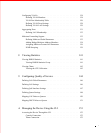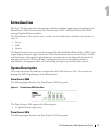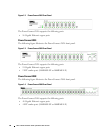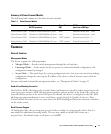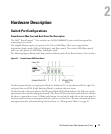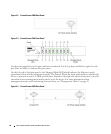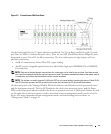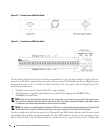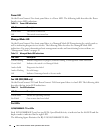
Dell PowerConnect 28xx Systems User Guide 15
• Higher bandwidth connections
• Improved bandwidth granularity
• High bandwidth server connectivity
A LAG is composed of ports with the same speed set to full-duplex operation.
DHCP Server
Dynamic Host Configuration Protocol is a method of managing network parameter assignment from a
single DHCP server. The Dynamic Host Configuration Protocol (DHCP) automates the assignment of
IP addresses, subnet masks, default gateway, and other IP parameters.
BootP and DHCP Clients
DHCP (Dynamic Host Configuration Protocol) enables additional setup parameters to be received from
a network server upon system startup. DHCP service is an on-going process. DHCP is an extension to
BootP.
The BootP client is operational if there is a corrupted or invalid software image. The BootP client then
continuously attempts to find a BootP server, by sending BootP requests to all ports on the default
VLAN, until a BootP server replies. The information replied is then used to provide the switch system
with a TFTP server IP address and a download file name. The switch can then configure these values to
the TFTP client and try to download a valid runtime image.
Spanning Tree Protocol Features
Spanning Tree Protocol (STP)
802.1d Spanning tree is a standard Layer 2 switch requirement that allows bridges to automatically
prevent and resolve L2 forwarding loops. Switches exchange configuration messages using specifically
formatted frames and selectively enable and disable forwarding on ports.
Fast Link
STP can take up to 30-60 seconds to converge. During this time, STP detects possible loops, allowing
time for status changes to propagate and for relevant devices to respond. 30-60 seconds is considered too
long of a response time for many applications. The Fast Link option bypasses this delay, and can be used
in network topologies where forwarding loops do not occur.
IEEE 802.1w Rapid Spanning Tree
Spanning Tree can take 30-60 seconds for each host to decide whether its ports are actively forwarding
traffic. Rapid Spanning Tree (RSTP) detects uses of network topologies to enable faster convergence,
without creating forwarding loops.
STP Root Guard
Root guard restricts the interface from functioning as the root port for the switch



